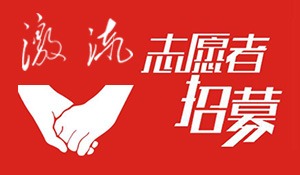与不平等作战的我们已经听惯了坏消息,突然来个好消息,反而吓一大跳。美国最高法院曾判定富人和大公司操纵大选并不违宪,谁会冀图它发布什么好消息呢?不过,日前的一项判决却赋予了普通美国人用金钱无法衡量的东西--生存权。
乍看之下,美国分子病理学协会与巨数遗传公司(Association for Molecular Pathology v. Myriad Genetics,以下简称“巨数遗传”--观察者网译注)的诉讼像是纯粹的科学之争:大法官们一致裁定,人类基因不能注册专利,而在实验室人工合成的DNA则可申请专利。不过,这项判决的重要性超乎常人想象。这是一场战争,一边是希望将健康私有化、变成与财富同比例增长的财产,另一边则认为,健康属于任何一个公正社会和经济体的大众权利。更深刻的是,医疗是不平等塑造我们的政治、司法和人口健康状况的潜在途径。
这桩诉讼不同于三星与苹果之争。在后者的官司中,裁判们(美国法院)装作持论公允,但似乎总是偏袒本土公司。而基因之争不仅仅关乎两家大公司。它是一个切入口,我们可以从中看到不平等状况有多么恶劣、多么顽固,与自私自利的商业行为作斗争有多么艰难、多么重要。
当然,法院和论辩双方不是这么描述争议的。巨数遗传是一家位于犹他州的公司,它分离出了两个人类基因,BRCA1和BRCA2。这两个基因的变异可能诱发女性乳腺癌--早期检测和预防工作至关重要。该公司业已获得这两个基因的专利权。基因“拥有权”可以禁止其他人检测这两个基因。似乎关键是一个技术性问题:分离出的自然基因可以用来注册专利吗?
不过,专利却拥有实实在在的物质利益,因为他们抬高了检测的高昂价格。基因检测实际上可以非常低廉的价格铺展开来--一个人花约1000美元便可检测全部2万个基因,更不要说只是针对某种疾病的专门检测,价格会便宜得多。巨数遗传却要价约4000美元,只检查那两个基因。科学家们提出,巨数遗传的检测方法没什么特别之处--只是检测那两个他们声称“拥有”的基因,其数据库因为专利原因,其他人拿不到。
最高法院支持原告(各个大学、研究者、美国公民权利联盟[ACLU]和公共专利基金会派出的患者代表)的判决生效数小时后,多家实验室即宣布,他们也将开始提供乳腺癌基因检测。这从侧面证明,巨数遗传所谓的“创新”实际上是基于现有的基因,而不是发明了某种特别的检测方法。(巨数遗传还不甘心,本月,他们已发起两项新的诉讼,试图阻止Ambry Genetics和Gene by Gene两家公司进行乳腺癌基因检测。其理由是,后两家公司侵犯了巨数遗传所拥有的其他专利。)巨数遗传竭尽所能阻止竟争对手自有其苦衷--最高法院判决出来以前,该公司刚刚从一轮30%的跌势中喘过气来,现在股价又跌了将近20%。这家公司曾经“拥有”基因,不希望别人偷窃它的财产。巨数遗传就像大多数公司一样,更希望利用专利来实现利润最大化,而不是拯救生命--如果它还有恻隐之心的话,早就应该降低检测价格,引入同行,推动研发更精确、更廉价的检测手段。该公司力图证明,其专利所带来的垄断价格和经营活动,乃是其未来科研活动的动力。但是,专利所带来的负面效果日趋明显,它又死抱着垄断权不放,无怪乎那些假借公益的名头都经不起推敲。
制药行业--一如往常--宣称一旦缺少专利保护,医药研究就没有了动力,那所有人都将遭殃。我为法庭提供了一份专家意见,解释制药行业观点的谬误之处,并指出此类专利实际上是在阻碍创新。支持原告的其他专家团体(例如AARP)指出,巨数遗传的专利使得患者无法获得关于病情的第三方意见或验证性检测。最近,巨数遗传宣称不会禁止此类检测--虽然该公司对Ambry Genetics和Gene by Gene两家公司发起了诉讼。
本案中,巨数遗传拒绝接受两名女性的联邦医疗补助,从而拒绝为两人做基因检测--据控方说法,因为嫌联邦医疗补助的回扣过少。而其他女性在经过巨数遗传的一轮检测以后,必须做出痛苦的决定,是否要做手术切除一侧或两侧乳房,或者切除卵巢。她们知道的信息极为有限,因为,巨数遗传的额外乳腺癌基因突变检测要价高昂(巨数遗传要价700美元才肯提供按国家规定必须告知患者的信息),且由于专利封锁而无法获得第三方意见。
最高法院传来的好消息是,在美国境内,人类基因不得作为专利。在某种意义上,法院将原本属于女性的东西还给了她们。这有两个重大意义:第一,引入竞争,可以研发出更精确、更廉价的基因检测手段。我们终于可以利用市场手段驱动创新。第二,贫困女性的生存权更为平等--获得抗争乳腺癌的平等权利。
同样重要的是,这只是全球知识产权全景的一个小小注脚,该领域严重从属于商业利益--尤其是美国。美国试图利用其知识产权霸权欺压他国,例如世贸组织和各种双边、多边贸易机制。正在进行的所谓跨太平洋伙伴(TPP)谈判也是美国的工具之一。贸易协定理应是外交的重要手段:贸易能够促进各方面交流。但美国贸易谈判代表的所作所为却让其他国家觉得,美国人把商业利益看得比人命更重要。这将损害美国的国际形象,强化“粗俗的美国人”的刻板印象。
经济力量常常比道德观念更有影响力,美国因为知识产权而获得商业利益,国家政策则对世界不平等推波助澜。大多数国家已经和美国一样:穷人的生命因公司利润而牺牲。但就算政府愿意出钱为民众提供巨数遗传的基因检测服务,那也会付出代价:政府为了某项医疗服务而支付高昂的垄断价格,这些钱本可以用来推广其他医疗服务。
巨数遗传体现了拙著《不平等的代价》所指出的三个方面。首先,我提出,社会不平等不仅仅是经济活动的后果,还受到政治、司法等因素的影响。我们的知识产权机制无疑推动了最恶劣的不平等。生命权不应该从属于不均等的支付能力。
第二,我国经济体制中某些万恶的不平等状况是“寻租”的恶果:通过操纵社会或政治环境而攫取利润、创造不平等--瓜分蛋糕,而不是把蛋糕做大。最恶劣的是,少数人通过牺牲底层人民积累财富。巨数遗传的高额检测费用既没有扩大经济活动规模或提高经济活力,又降低了贫困人口的福利状况。
有医疗保险的人为巨数遗传创造了利润--医保可抵消部分检测费用,而数以百万计的没有医疗保险的美国人一旦上钩,就必须支付巨数遗传开出的垄断价格以及后续服务。由于价格超过了可承受能力,这些人可能会有过早死亡的危险。
严格的知识产权保护论者宣称,这是我们享受创新所带来的必要代价,长远看来,知识产权可以拯救更多人。两难境地:一边是人数较少的贫穷女性,另一边是未来人数更多的女性群体。但这种说法有许多漏洞。本案中,这尤其荒唐,因为,这两个基因早晚会被“人类基因组计划”分离出来。但荒唐之处不止于此。基因研究者甚至提出,专利实际上阻碍了研发新的基因检测技术,干扰了科学研究进程。所有的知识都以现有知识为基础,垄断现有知识也就是阻碍创新。巨数遗传自己的发现--就像其他科学活动一样--使用了其他人研发的技术和理念。如果不依靠原有知识,巨数遗传就不可能有今天的技术。
第三,正如拙著的书名所强调的,不平等不仅要在道德上予以谴责,它还有物质上的代价。监管知识产权的司法体系设计糟糕,很容易带来寻租--我国便是如此,虽然最高法院最近的几次判决有所改善。结果是,创新少了,不平等多了。
上月去世的诺贝尔奖获得者、经济历史学家罗伯特?福格尔(Robert W. Fogel)曾提出一个洞见:健康和技术的双重进步是自19世纪以来经济爆炸新增长的重要原因。所以,可以说,滋生垄断寻租的知识产权体制阻碍了人类的健康发展和经济发展,在更为普遍的意义上创造了不平等。
不妨另辟蹊径。知识产权的捍卫者们过度强调推动创新的作用。大多数的重要创新--计算机、晶体管、镭射激光的基本理念,以及DNA的发现--都不是因为金钱的诱惑而诞生。这些都是对知识的渴求的产物。当然,科学离不开物质支持。但专利制度仅仅是提供科研资源的一种方式,而且还不是最佳的方式。政府资助、基金会、奖励(对于发现者予以奖励,并通过市场机制获取收益,普及知识)都是可行的方案,且不会像专利制度这样造成不平等。
巨数遗传的DNA专利是最恶劣的医疗不平等现象之一,反过来看,也是最恶劣的经济不平等现象之一。最高法院的本次判决坚守了我们所珍视的权利与价值,令人欣慰。但这只是社会与经济平等的漫长斗争中的一小步。
(本文原刊美国《纽约时报》网站评论版2013年7月14日;朱新伟译)(后附原文)
How Intellectual Property Reinforces InequalityBy JOSEPH E. STIGLITZ
In the war against inequality, we've become so used to bad news thatwe're almost taken aback when something positive happens. And with theSupreme Court having affirmed that wealthy people and corporationshave a constitutional right to buy American elections, who would haveexpected it to bring good news? But a decision in the term that justended gave ordinary Americans something that is more precious thanmoney alone - the right to live.
At first glance, the case, Association for Molecular Pathology v.
Myriad Genetics, might seem like scientific arcana: the court ruled,unanimously, that human genes cannot be patented, though syntheticDNA, created in the laboratory, can be. But the real stakes were muchhigher, and the issues much more fundamental, than is commonlyunderstood. The case was a battle between those who would privatizegood health, making it a privilege to be enjoyed in proportion towealth, and those who see it as a right for all - and a centralcomponent of a fair society and well-functioning economy. Even moredeeply, it was about the way inequality is shaping our politics, legalinstitutions and the health of our population.
Unlike the bitter battles between Samsung and Apple, in which thereferees (American courts), while making a pretense at balance, seemto consistently favor the home team, this was a case that was morethan just a battle between corporate giants. It is a lens throughwhich we can see the pernicious and far-reaching effects ofinequality, what a victory over self-serving corporate behavior lookslike and - just as important - how much we still risk losing in suchfights.
Of course, the court and the parties didn't frame the issues that wayin their arguments and decision. A Utah firm, Myriad Genetics, hadisolated two human genes, BRCA1 and BRCA2, that can contain mutationsthat predispose women who carry them to breast cancer - crucialknowledge for early detection and prevention. The company hadsuccessfully obtained patents for the genes. “Owning” the genes gaveit the right to prevent others from testing for them. The corequestion of the case was seemingly technical: Are isolated, naturallyoccurring genes something that can be patented?
But the patents had devastating real-world implications, because theykept the prices for the diagnostics artificially high. Gene tests canactually be administered at low cost - a person can in fact have all20,000 of her genes sequenced for about $1,000, to say nothing of muchcheaper tests for a variety of specific pathologies. Myriad, however,charged about $4,000 for comprehensive testing on just two genes.
Scientists have argued that there was nothing inherently special orsuperior about Myriad's methods - it simply tested for genes that thecompany claimed to own, and did so by relying on data that was notavailable to others because of the patents.
Hours after the Supreme Court's ruling in favor of the plaintiffs - agroup of universities, researchers and patient advocates, representedby the American Civil Liberties Union and the Public Patent Foundation- other laboratories quickly announced that they would also beginoffering tests for the breast cancer genes, underlining the fact thatMyriad's “innovation” was identifying existing genes, not developingthe test for them. (Myriad is not done fighting, though, having filedtwo new lawsuits this month that seek to block the companies AmbryGenetics and Gene by Gene from administering their own BRCA tests, onthe grounds that they violate other patents that Myriad holds.)It should not be very surprising that Myriad has done everything itcan to prevent its tests' revenue stream from facing competition -indeed, after recovering somewhat from a 30 percent drop in the wakeof the court ruling, its share price is still nearly 20 percent belowwhat it was beforehand. It owned the genes, and didn't want anybodytrespassing on its property. In obtaining the patent, Myriad, likemost corporations, seemed motivated more by maximizing profits than bysaving lives - if it really cared about the latter, it could and wouldhave done better at providing tests at lower costs and encourageothers to develop better, more accurate and cheaper tests. Notsurprisingly, it made labored arguments that its patents, whichallowed monopolistic prices and exclusionary practices, were essentialto incentivize future research. But when the devastating effects ofits patents became apparent, and it remained adamant in exerting itsfull monopoly rights, these pretensions of interest in the greatergood were woefully unconvincing.
The drug industry, as always, claimed that without patent protection,there would be no incentives for research and all would suffer. Ifiled an expert declaration with the court (pro bono), explaining whythe industry's arguments were wrong, and why this and similar patentsactually impeded rather than fostered innovation. Other groups thatfiled amicus briefs supporting the plaintiffs, like AARP, pointed outthat Myriad's patents prevented patients from obtaining secondopinions and confirmatory tests. Recently, Myriad pledged it would notblock such tests - a pledge it made even as it filed the lawsuitsagainst Ambry Genetics, and Gene by Gene.
Myriad denied the test to two women in the case by rejecting theirMedicaid insurance - according to the plaintiffs, because thereimbursement was too low. Other women, after one round of Myriad'stesting, had to make agonizing decisions about whether to have asingle or double mastectomy, or whether to have their ovaries removed,with severely incomplete information - either Myriad's testing foradditional BRCA mutations was unaffordable (Myriad charges $700 extrafor information that national guidelines say should be provided topatients), or second opinions were unattainable because of Myriad'spatents.
The good news coming from the Supreme Court was that in the UnitedStates, genes could not be patented. In a sense, the court gave backto women something they thought they already owned. This had twoenormous practical implications: one is it meant that there could nowbe competition to develop better, more accurate, less expensive testsfor the gene. We could once again have competitive markets drivinginnovation. And the second is that poor women would have a more equalchance to live - in this case, to conquer breast cancer.
But as important a victory as this is, it is ultimately only onecorner of a global intellectual property landscape that is heavilyshaped by corporate interests - usually American. And America hasattempted to foist its intellectual property regime on others, throughthe World Trade Organization and bilateral and other multilateraltrade regimes. It is doing so now in negotiations as part of theso-called trans-Pacific Partnership. Trade agreements are supposed tobe an important instrument of diplomacy: closer trade integrationbrings closer ties in other dimensions. But attempts by the office ofthe United States Trade Representative to persuade others that, ineffect, corporate profits are more important than human livesundermines America's international standing: if anything, itreinforces the stereotype of the crass American.
Economic power often speaks louder, though, than moral values; and inthe many instances in which American corporate interests prevail inintellectual property rights, our policies help increase inequalityabroad. In most countries, it's much the same as in the United States:
the lives of the poor are sacrificed at the altar of corporateprofits. But even in those where, say, the government would provide atest like Myriad's at affordable prices for all, there is a cost: whena government pays monopoly prices for a medical test, it takes moneyaway that could be spent for other lifesaving health expenditures.
The Myriad case was an embodiment of three key messages in my book“The Price of Inequality.” First, I argued that societal inequalitywas a result not just of the laws of economics, but also of how weshape the economy - through politics, including through almost everyaspect of our legal system. Here, it's our intellectual propertyregime that contributes needlessly to the gravest form of inequality.
The right to life should not be contingent on the ability to pay.
The second is that some of the most iniquitous aspects of inequalitycreation within our economic system are a result of “rent-seeking”:
profits, and inequality, generated by manipulating social or politicalconditions to get a larger share of the economic pie, rather thanincreasing the size of that pie. And the most iniquitous aspect ofthis wealth appropriation arises when the wealth that goes to the topcomes at the expense of the bottom. Myriad's efforts satisfied boththese conditions: the profits the company gained from charging for itstest added nothing to the size and dynamism of the economy, andsimultaneously decreased the welfare of those who could not afford it.
While all of the insured contributed to Myriad's profits - premiumshad to go up to offset its fees, and millions of uninsuredmiddle-income Americans who had to pay Myriad's monopoly prices wereon the hook for even more if they chose to get the test - it was theuninsured at the bottom who paid the highest price. With the testunaffordable, they faced a higher risk of early death.
Advocates of tough intellectual property rights say that this issimply the price we have to pay to get the innovation that, in thelong run, will save lives. It's a trade-off: the lives of a relativelyfew poor women today, versus the lives of many more women sometime inthe future. But this claim is wrong in many ways. In this particularcase, it is especially wrong, because the two genes would likely havebeen isolated (“discovered,” in Myriad's terminology) soon anyway, aspart of the global Human Genome Project. But it is wrong on othercounts, as well. Genetic researchers have argued that the patentactually prevented the development of better tests, and so interferedwith the advancement of science. All knowledge is based on priorknowledge, and by making prior knowledge less available, innovation isimpeded. Myriad's own discovery - like any in science - usedtechnologies and ideas that were developed by others. Had that priorknowledge not been publicly available, Myriad could not have done whatit did.
And that's the third major theme. I titled my book to emphasize thatinequality is not just morally repugnant but also has material costs.
When the legal regime governing intellectual property rights isdesigned poorly, it facilitates rent-seeking - and ours is poorlydesigned, though this and other recent Supreme Court decisions haveled to one that is better than it otherwise would have been. And theresult is that there is actually less innovation and more inequality.
Indeed, one of the important insights of Robert W. Fogel, a NobelPrize-winning economic historian who died last month, was that asynergy between improved health and technology accounts for a goodpart of the explosive economic growth since the 19th century. So itstands to reason that intellectual property regimes that createmonopoly rents that impede access to health both create inequality andhamper growth more generally.
There are alternatives. Advocates of intellectual property rights haveoveremphasized their role in promoting innovation. Most of the keyinnovations - from the basic ideas underlying the computer, totransistors, to lasers, to the discovery of DNA - were not motivatedby pecuniary gain. They were motivated by the quest for knowledge. Ofcourse, resources have to be made available. But the patent system isonly one way, and often not the best way, of providing theseresources. Government-financed research, foundations, and the prizesystem (which offers a prize to whoever makes a discovery, and thenmakes the knowledge widely available, using the power of the market toreap the benefits) are alternatives, with major advantages, andwithout the inequality-increasing disadvantages of the currentintellectual property rights system.
Myriad's effort to patent human DNA was one of the worstmanifestations of the inequality in access to health, which in turn isone of the worst manifestations of the country's economic inequality.
That the court decision has upheld our cherished rights and values isa cause for a sigh of relief. But it is only one victory in the biggerstruggle for a more egalitarian society and economy.
为了能够更好地服务于关注网站的老师和朋友,激流网现推出会员制度:详见激流网会员办理方案
为了避免失联请加+激流网小编微信号jiliu1921
 (作者:斯蒂格利茨(J. Stiglitz)。来源:美国《纽约时报》网站评论版2013年7月14日。责任编辑:邱铭珊)
(作者:斯蒂格利茨(J. Stiglitz)。来源:美国《纽约时报》网站评论版2013年7月14日。责任编辑:邱铭珊)





